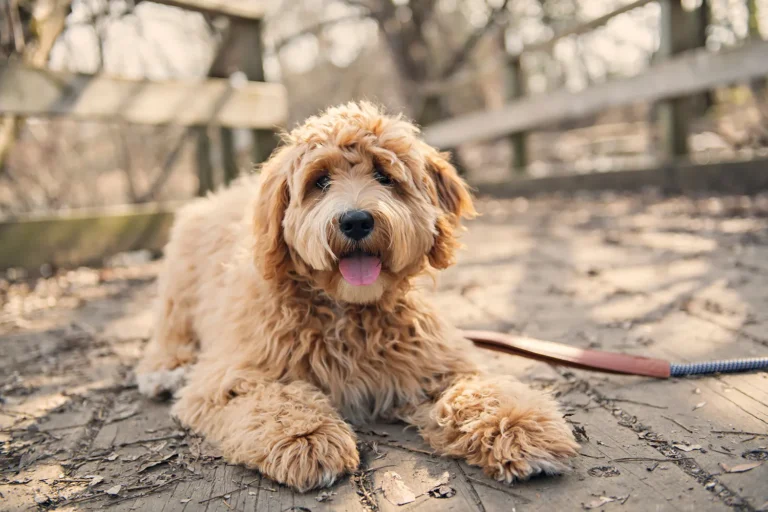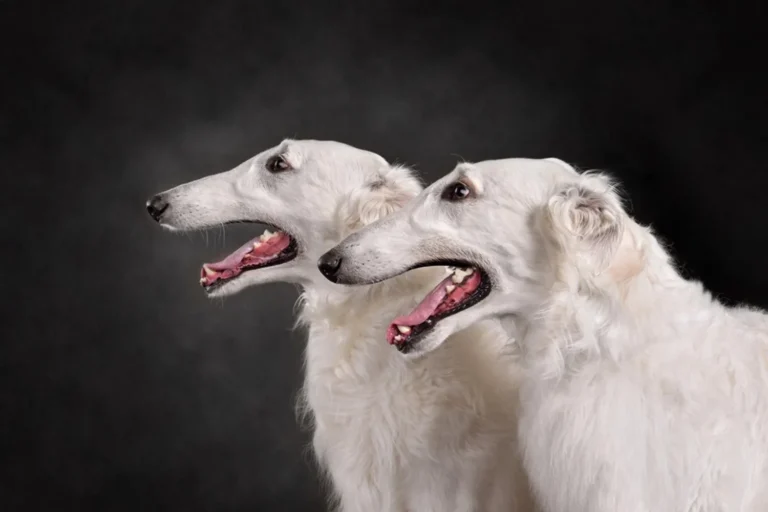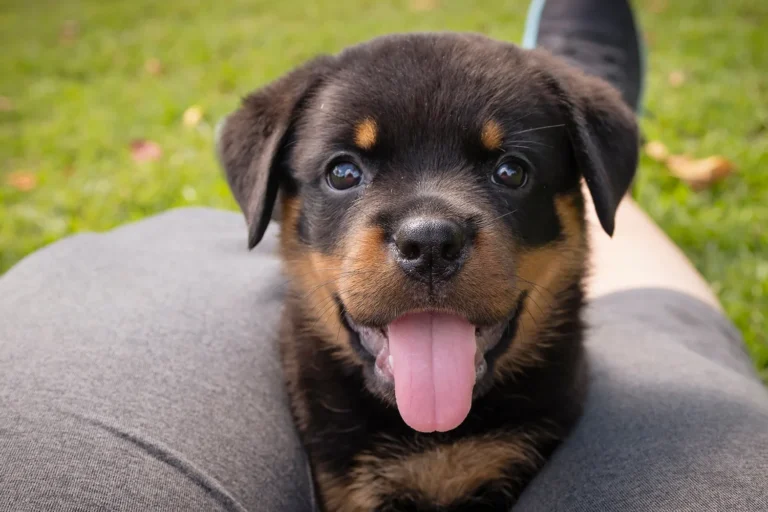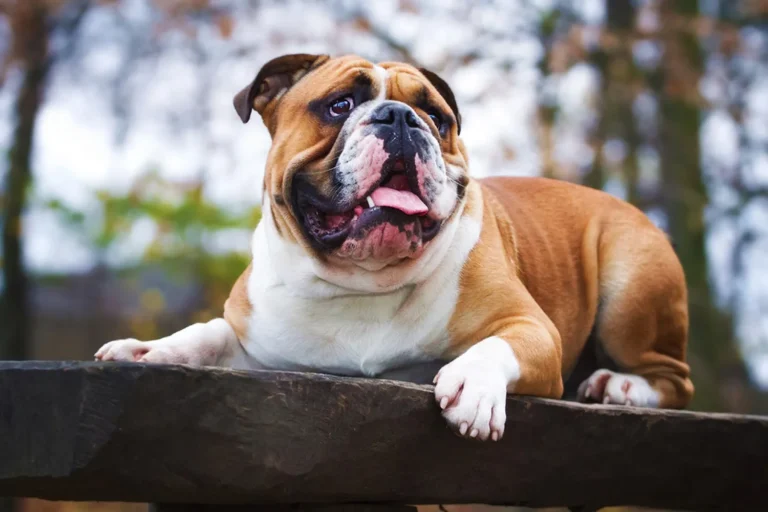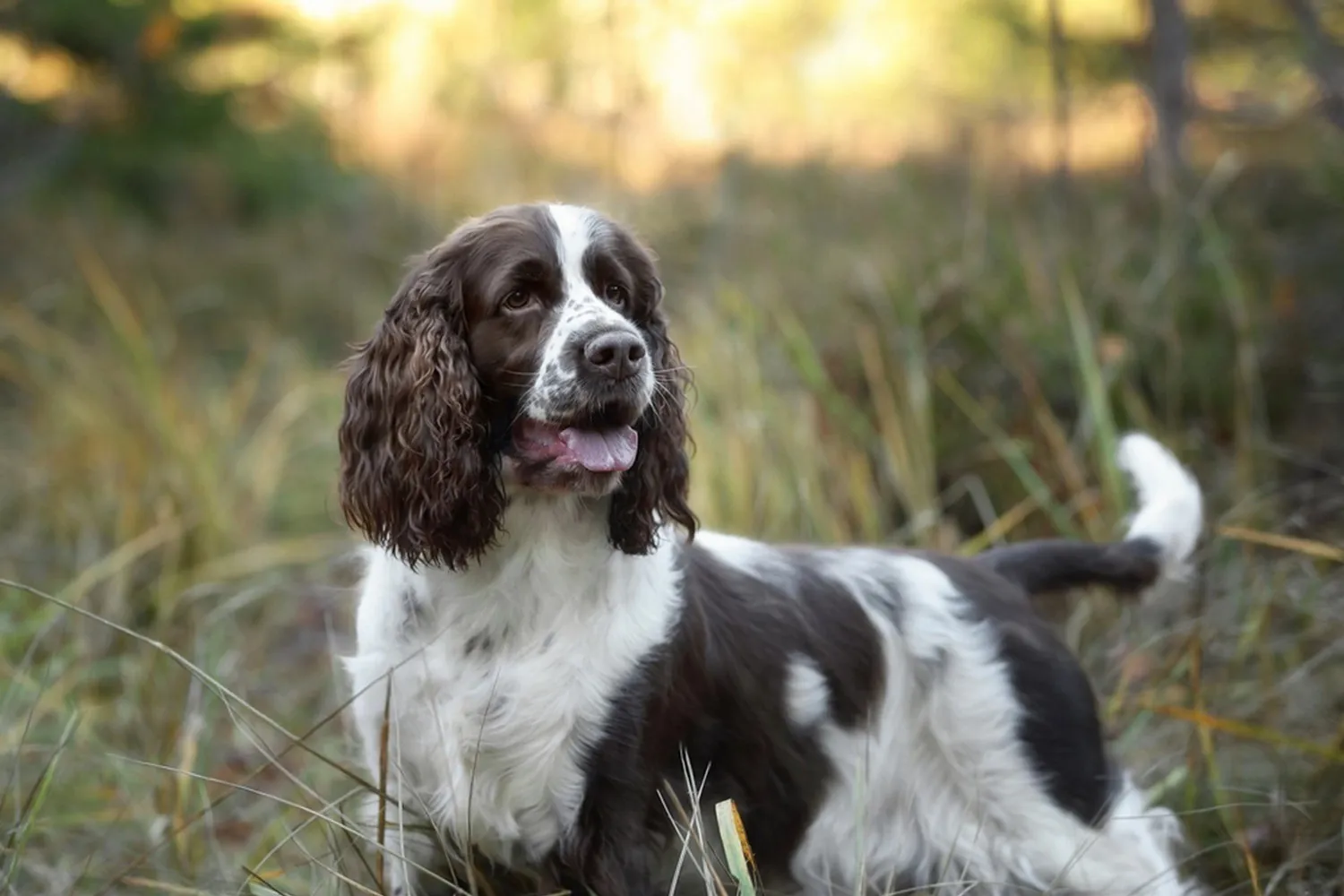
Full of fizz and bounce, English Springer Spaniels are the definition of enthusiastic. If your family loves getting outside, they’re the kind of dog who will happily keep pace on a morning jog and still have energy left for an afternoon hike. My neighbor’s Springer, Poppy, does a whole body wiggle when she sees people at the park, and within five minutes she’s made friends with every dog there. That social, people loving nature is a big part of why they’re so popular it’s hard not to smile when a Springer’s helicopter tail starts going.
If you’re thinking about one, plan on plenty of daily exercise and a dash of brain work. An hour of brisk walking plus a round of fetch or some scent games goes a long way; they’re natural little detectives. I like to mix in short training sessions sit, stay, and fun tricks because a tired Springer is a happy, snuggly Springer. Early socialization is your best buddy here: friendly meetups, positive introductions, and solid recall practice (that bird dog nose can be very persuasive). Give them structure, play, and company, and they’ll give you a loyal, joyful shadow who’s always up for the next adventure.
History and Origin of the English Springer Spaniel
Before they were family companions and agility stars, English Springer Spaniels were hardworking hunting partners. Their job was to “spring” game birds from cover bursting through brush to flush birds into the air so hunters could take a clean shot. That dramatic little leap is what gave them their name. I remember watching a Springer at a field trial in the countryside nose down, tail whirring like a metronome then suddenly launching into the heather as if shot from a slingshot. It’s easy to see how the name stuck.
All Spaniels trace back to old European hunting dogs, and their story points to Spain hence “spaniel” before they were refined in the British Isles. Traders and travelers brought different types across borders, and local hunters bred for traits they needed: keen noses, steady temperaments, and an eager, biddable nature. Early spaniels within the same litter could look surprisingly different. Smaller pups were favored for hunting woodcock (the “cocking” spaniels), while the bigger, springier youngsters became the “springing” spaniels. Over time those practical size distinctions grew into distinct breeds, including the Cocker Spaniel and the English Springer Spaniel, all sharing that old family tree.
As the shooting sports evolved, so did the Springer. In Britain, the breed was standardized and formally recognized in the early 1900s, and you can still see two broad styles today: field bred Springers, compact athletes with boundless drive, and show bred Springers, a touch more ornate but still very much spaniel at heart. A breeder I spoke with in Devon once joked, “Show or field, they all wake up ready to work. The difference is just how quickly they finish their breakfast first.”
Their athleticism is legendary, which is why you’ll spot Springers flying through agility courses, excelling at scent work, and yes zooming around their owners’ gardens like furry tornadoes. If you bring one home, channel that heritage. Give them a job: hide and seek with kibble, fetch with a bit of obedience, or weekend hikes where they can follow their nose. A tired Springer is a happy Springer, and when they curl up afterward with that content little sigh, you’re sharing a moment with centuries of gundog history.

What Is an English Springer Spaniel?
Meet the cheerful, always ready for fun companion with soulful eyes and silky, feathered ears. English Springer Spaniels are easy to spot with their long, slightly shaggy looking coats and those friendly faces that seem to smile back at you. They’re a medium sized bundle of energy and enthusiasm just the kind of dog that thrives with active owners and energetic kids who love being outdoors. I once dog sat a Springer who turned every park trip into a joyful mission, “springing” through the grass and returning tennis balls like it was his life’s work.
Their history as hunting dogs makes them true team players. They don’t just want to be near you; they want to be involved. Expect a little four legged shadow while you fold laundry, work from home, or head out for a jog. Mine would curl up across my feet during emails, then explode into action the moment I stood up. Give them jobs fetch, scent games, trick training and they’ll repay you with focus and good manners. A tired Springer is a happy Springer, and a 30-minute stroll won’t cut it most days; think long walks, play sessions, or a good run. Pro tip: practice recall early and often. Their noses are powerful, and a fascinating scent can feel more persuasive than your best whistle.
That beautiful coat comes in classic black and white, and you’ll also see coats with tan markings and other variations. It’s gorgeous and it collects leaves like a magnet. A quick brush a few times a week keeps things neat, and I always check ears after muddy adventures to keep them clean and comfy. In short, if you want a bright, loyal, family loving dog who’s up for every adventure, the English Springer Spaniel is a delight.

Who Is an English Springer Spaniel Best For?
English Springer Spaniels are happiest with people who love to move. Think families who enjoy weekend hikes, long walks after dinner, and plenty of backyard games. They’ve got that springy energy (it’s in the name!) and need regular playtime to stay balanced and content. A home with room to run is ideal these dogs really do best when they can stretch those legs. I once looked after a Springer named Daisy who would do joyful laps around the yard every morning before breakfast, as if she were clocking in for her daily shift.
They’re also wonderfully affectionate with children when they’ve had early, positive socialization. A friend of mine has two little ones and a Springer who has practically appointed herself their bodyguard she naps by the nursery door and trots alongside the stroller like it’s her job. My advice: start socialization early, teach kids how to be gentle and respectful, and always supervise. Springers are sensitive and eager to please, and they’ll return that kindness with loyalty and a gentle, watchful nature.
If you’re considering this breed, plan for plenty of daily exercise think a solid walk, a spirited game of fetch, and some brain work like scent games or simple training sessions. They thrive when included in family life, not left to entertain themselves. A securely fenced yard is a big plus, and giving them a cozy spot to settle after play helps them learn to switch off. For active families with time and space, a Springer can be a joyful, devoted companion who’s always ready for the next adventure.
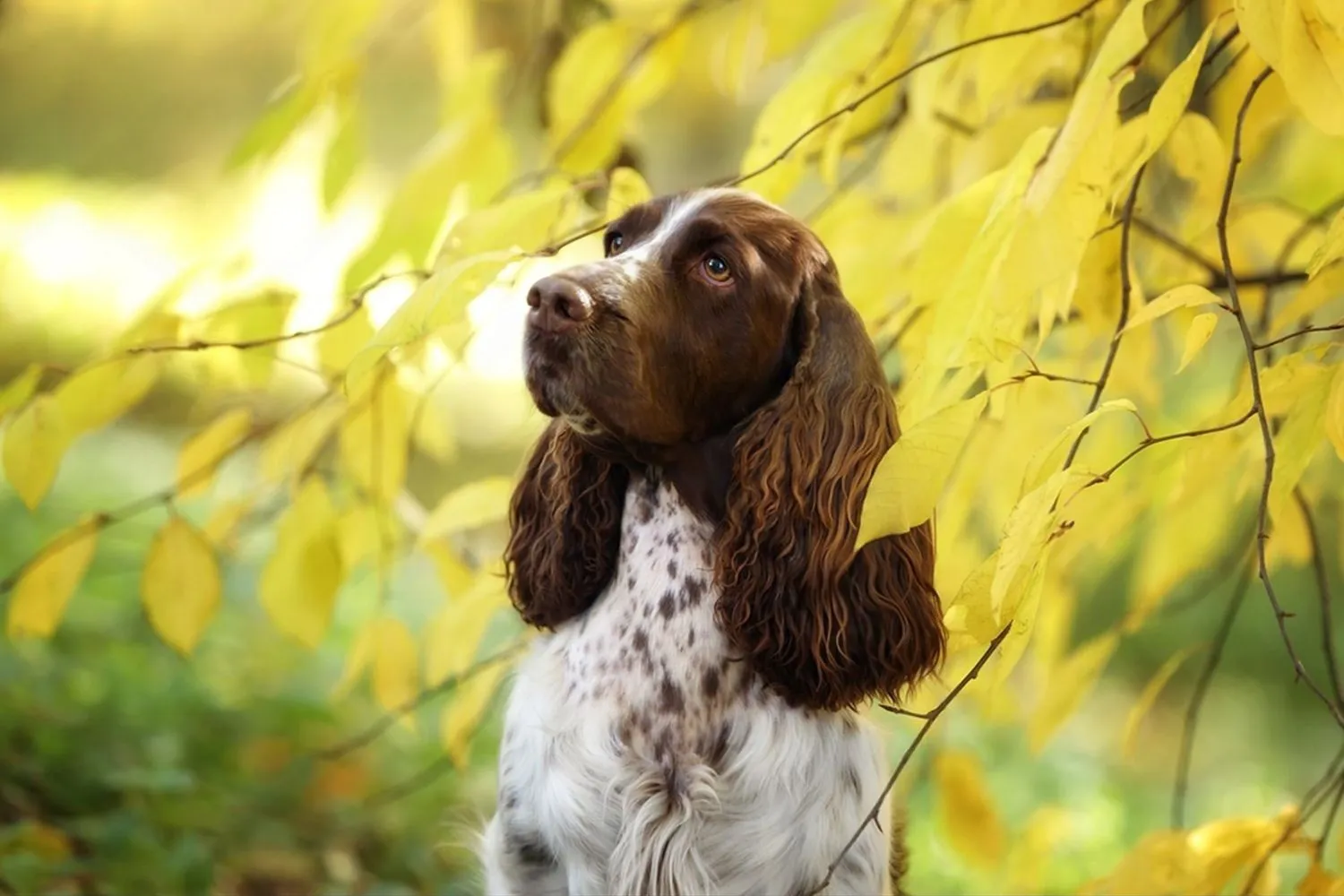
English Springer Spaniel Grooming and Shedding
Those beautiful, feathery coats don’t stay tangle free on their own. A good weekly brush is the bare minimum for a Springer, and during the big seasonal shed in late spring and early summer, I bump it up to quick sessions every other day. I like starting with a slicker brush to lift loose hair, then running a metal comb through the “trouble zones” where mats sneak in behind the ears, under the collar, the armpits, and the feathery legs and tail. I once skipped a week after a muddy hike and paid for it with a softball sized knot behind the ear. Lesson learned: five minutes now beats a half hour detangling later.
Baths every month or so keep their coat fresh, especially if your Springer is a puddle enthusiast like mine. After any wet romp, I towel dry well and comb through while the coat is just damp to keep the feathers from felting. Those floppy ears need regular checks too wipe them out gently once a week to stay ahead of gunk. If you hike, snip any burrs out of the feathering right away; a breeder I chatted with in Oregon swore by keeping the feet and hocks neatly trimmed to cut down on debris, and she was absolutely right. A simple undercoat rake during shedding season can make a dramatic difference in what ends up on your couch. I keep a lint roller by the door and a mat by the crate little habits that save a lot of vacuuming.
Nails should be trimmed regularly every 2-4 weeks for most Springers and don’t forget dewclaws if they have them. I use a grinder for a few quick passes while handing out tiny treats; it turns nail time into a tolerable ritual. If nail trimming makes you nervous, book a session with a professional groomer and ask them to show you technique. Many owners set a standing grooming appointment every 6-8 weeks for a tidy up of nails, paws, and feathering, and then maintain the brushing routine at home. It’s a nice rhythm that keeps your Springer comfortable and your floors a little less furry.
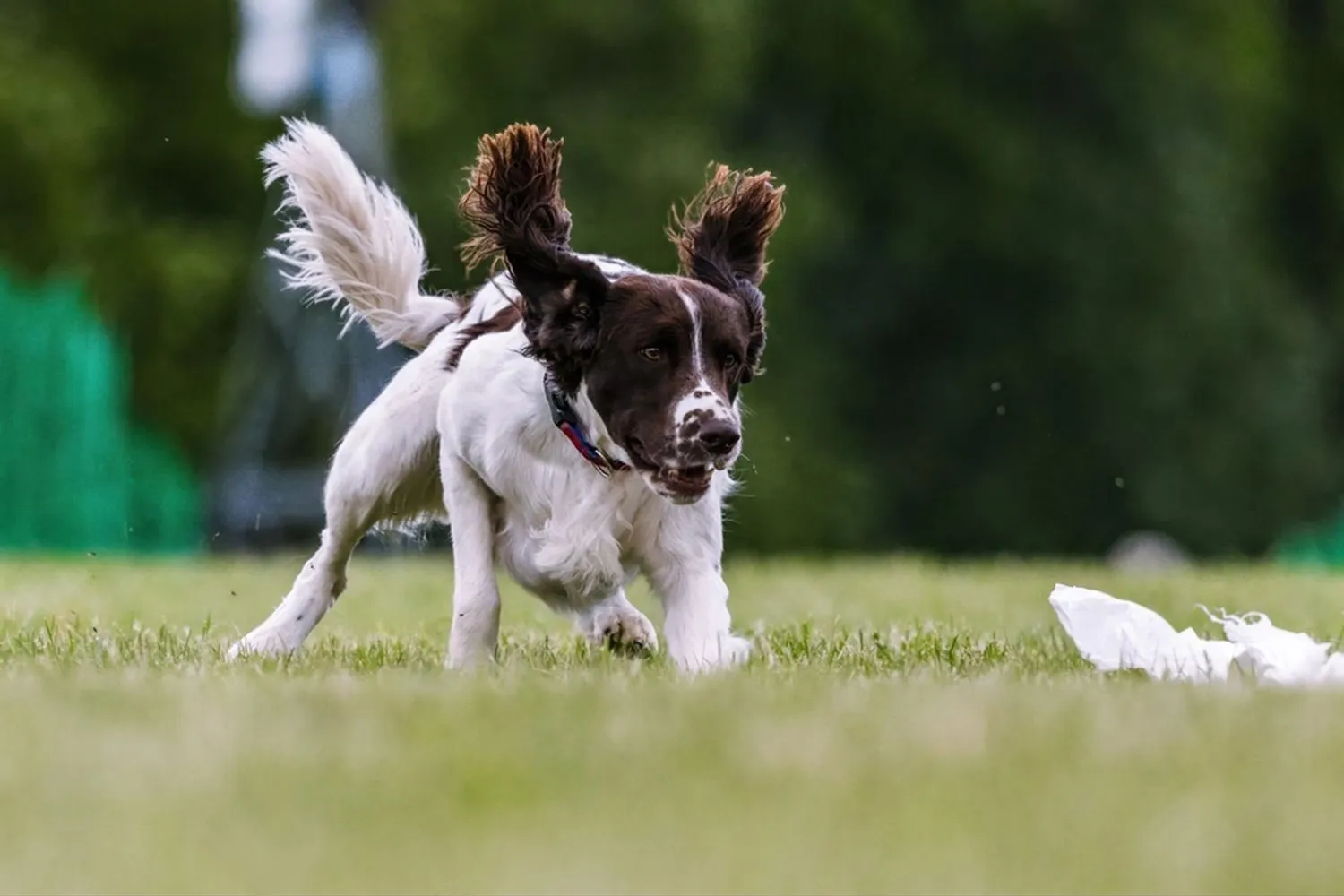
Do English Springer Spaniels Bark a Lot?
In my experience, English Springer Spaniels are more likely to greet you with a full body wiggle than a wall of noise. Even though they come from gun dog roots, most Springers are fairly quiet around the house and aren’t chronic barkers. They’ll give a sensible “who’s there?” at the door or when a squirrel makes bad life choices near the fence, but it’s usually brief and purposeful rather than nonstop yapping. Mine learned early that the doorbell meant “go to your mat and wait,” and now the mail carrier gets tail wags instead of an alarm.
That said, they can bark at strangers if they’re unsure nothing dramatic, just an alert. The good news is this is often avoided with early socialization. Puppy meet and greets, calm visits to the hardware store, and handing treats to friendly guests worked wonders for us. A few practical tips: teach a “quiet” cue after two polite woofs, reward calm settling, and keep their brains busy with sniffy walks and puzzle toys. Springers thrive when they’ve had a job to do, even if that job is finding kibble hidden under cups. If window watching turns into barking, a bit of management like frosted film on the lower panes helps. Overall, with routine, training, and plenty of exercise, most English Springer Spaniels stay on the quieter side and make polite, cheerful greeters.
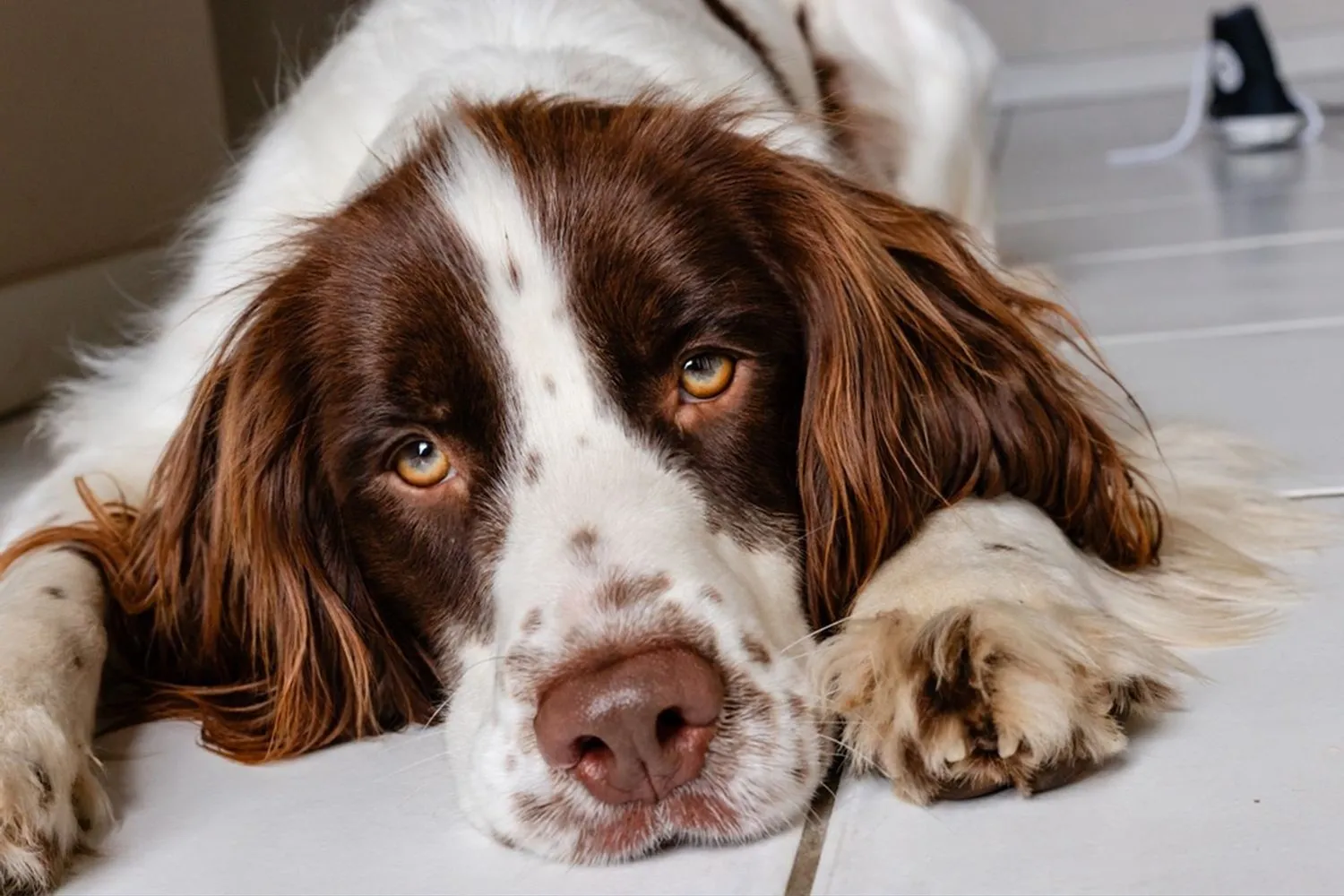
What is the average weight and height of an English Springer Spaniel?
If you’ve ever watched a Springer bound across a field, you won’t be surprised to hear they’re fairly light on their feet. Most English Springer Spaniels tip the scales between 18 and 25 kilograms (about 40 to 55 pounds). In my experience, males tend to land toward the higher end, while females and the super lean working lines often sit a bit lower. They’re active, athletic dogs that carry their weight like little athletes more sprinter than sumo. I always go by the rib test: you should be able to feel ribs with a light touch but not see them. If my Springer’s activity ramps up say, after a week of long hikes I’ll add a spoonful of food; if we’ve had a lazy, rainy stretch, I shave a bit off. Small tweaks go a long way with this breed.
Height wise, Springers are classic medium sized dogs, standing roughly 40 to 55 centimeters at the shoulder (around 16 to 22 inches). Genetics and sex play a role here too show bred Springers can look a touch stockier, while working lines are often a smidge taller and leaner. Most reach their adult height by about a year old but keep filling out in muscle and chest until 18 months or so. My friend’s Springer, Lottie, hovered at 50 cm by 11 months and didn’t really “finish” her grown up look until her second birthday one day she just woke up with that proper Springer chest and a confident stance.
If you’re shopping for gear, this size range makes life pretty easy: a medium harness usually fits (with room to adjust), and a standard car crate for medium breeds works well. Just measure shoulder height and chest girth before buying Springers are wiggly, and a good fit keeps them secure on adventures. And whatever the numbers say, keep an eye on condition: a healthy Springer looks sleek, has a visible tuck at the waist, and still has energy to spare for that last fetch… and the one after that.
https://en.wikipedia.org/wiki/English_Springer_Spaniel
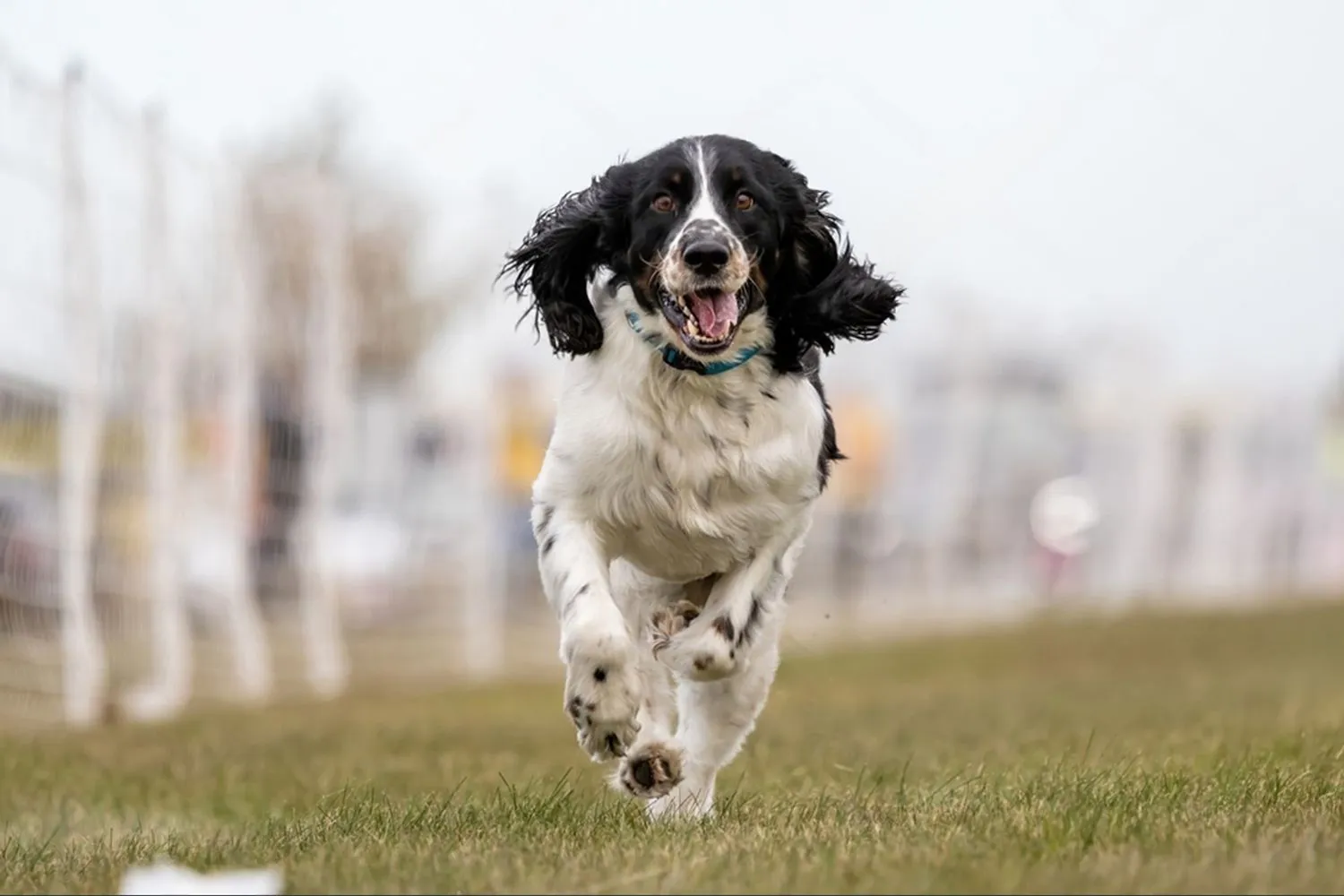
Are English Springer Spaniels Easy to Train?
Short answer: yes if you put in the time and keep it positive. Springers are bright, eager to please, and they bond fast, which makes training feel more like teamwork than a chore. Start early with socialization. Invite friends over, set up calm meet and greets with well behaved dogs, and try a puppy class. I still smile thinking about my Springer’s first playdate; we practiced “sit” before saying hello, and by the third visit he was offering that polite sit all on his own. Those early reps help them grow into friendly, confident dogs who handle new people and places with ease.
That said, Springers are energetic like, zoomies before breakfast energetic. Young pups can get a bit rough in play, so set boundaries right away. I used quick time outs, lots of redirection to toys, and taught cues like “gentle” and “off.” Keep sessions short and fun, reward generously, and be consistent. Choosing a responsible breeder or reputable rescue that prioritizes health and stable temperament makes a huge difference too; my friend learned that lesson the hard way and now always asks about temperament testing and early socialization.
Outdoors, plan for their curious, exploratory nature. A secure, fenced yard is your best friend, because Springers love to follow their noses and a bird flapping by can make recall magically disappear. I practiced recall on a long line, paid big with treats and play for checking in, and kept my dog leashed in unfenced areas. A good routine daily exercise, sniffy walks, and little jobs like retrieving or simple scent games channels that energy and makes training smoother. Do that, and your Springer will learn fast, stay safe, and be the devoted family companion they’re famous for.
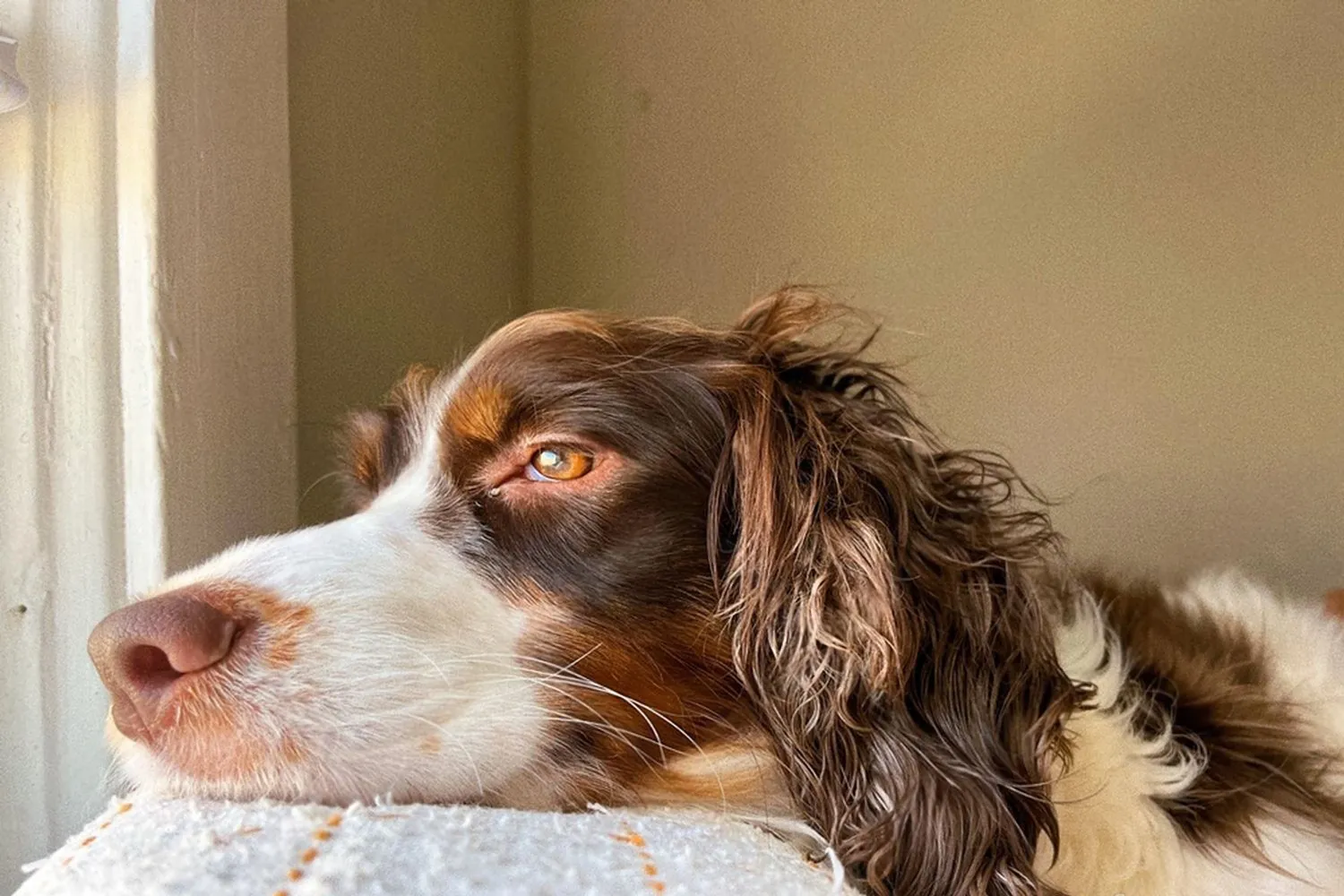
How Do English Springer Spaniels Behave? Temperament and Personality
If you bring home a Springer, expect a cheerful shadow who follows you from room to room with a wag that starts at the shoulders. These dogs are merry, energetic, and very people focused. Mine used to curl up under my desk during Zoom calls, but the second I stood up to stretch, he’d be at the door like, “Walk? Game? Adventure?” They thrive on activity and affection and will happily soak up love from you, your kids, and even the neighbor’s dog if given the chance.
Because Springers were bred to work alongside people, they’re natural pleasers. They love having a job and will invent one if you don’t give them one sometimes that “job” is enthusiastically sorting the laundry or herding the family from the kitchen to the garden. I remember a walk where a friend’s Springer insistently carried a gardening glove for half a mile, chest puffed out like he was delivering crown jewels. That eagerness makes them a dream to train with positive reinforcement. They’re sensitive souls, so keep things upbeat and clear, and you’ll see how quickly they pick up cues.
Fetch is their love language. Thanks to their flushing and retrieving roots, a Springer will chase and bring back just about anything tennis balls, sticks, that squeaky toy you forgot at the bottom of the bag. Pro tip I learned from a breeder in California: always bring two balls. It turns a reluctant drop into a speedy swap and keeps the game flowing. Teach a tidy “drop it” early, and you’ll save yourself a lot of soggy tug of war. Mix in some scent games or hide and seek with treats on rainy days; their noses are brilliant, and it tires them out mentally in the best way.
Daily exercise is key think long walks, a good romp in the yard, or a lively playdate plus a bit of brain work. A tired Springer is a content Springer. Without that outlet, they can get a little too inventive (my shoe rack once “migrated” to the hallway). They’re generally friendly with other dogs and people, but their enthusiasm can be… enthusiastic. A bit of impulse control training, like sit before greetings, goes a long way. Set loving boundaries, keep their minds busy, and you’ll have a loyal, affectionate companion who lives to make you smile.
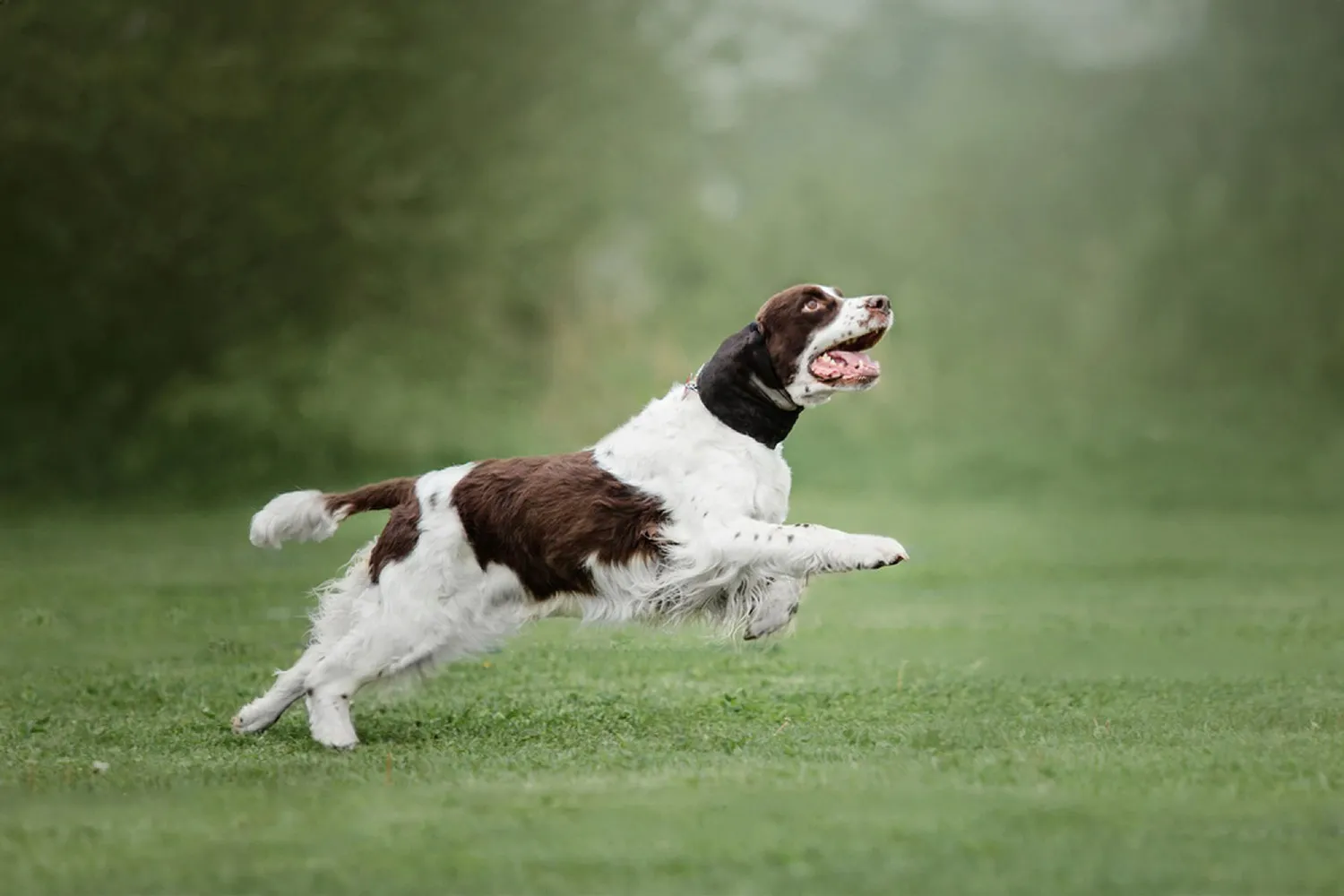
Do English Springer Spaniels Have Common Health Issues?
English Springer Spaniels are generally sturdy, happy, go all day dogs, but like every breed they do have a few health quirks to watch for. The one I’ve run into most over the years is ear trouble. Those beautiful, floppy ears can trap warmth and moisture, and a sudden temperature change or a romp in the winter cold can leave a Springer shaking their head by bedtime. I once came in from a snowy walk with my Springer, only to notice her tilting her head and giving me that “something’s not right” look. A quick ear check and a gentle clean kept it from turning into a full blown infection.
Ear care is your best friend with this breed. Make a habit of peeking inside the ears once or twice a week. You’re looking for redness, excess wax, or a yeasty smell. After baths, swimming, or wet winter walks, dry the ears carefully and let them “air out” a bit at home. A vet recommended ear cleaner used regularly can help prevent otitis externa, which is the fancy term for the common outer ear infection. If you spot head shaking, scratching, or see your Springer pulling away when you touch their ear, call your vet ear issues are much easier to fix early on. And whatever you do, don’t poke deep with cotton swabs; stick to the visible outer ear.
As Springers age, a few other conditions can crop up. Hip and elbow dysplasia are genetic joint problems where the joints don’t fit quite right, which can lead to pain or stiffness. Keeping your dog lean, building muscle with steady, low impact exercise, and avoiding too much jumping while they’re still growing all make a big difference. If you’re concerned, ask your vet about screening and the best plan for joint health over the long haul.
Eyes deserve attention too. Progressive Retinal Atrophy (PRA) is a hereditary condition that gradually affects vision. Regular eye exams help catch changes early. I had a friend whose Springer started bumping into the coffee table at dusk turns out the low light vision was slipping. They added a nightlight near the stairs and kept furniture in predictable spots, which helped a lot alongside their vet’s guidance.
You may also hear about Patent Ductus Arteriosus (PDA), a heart condition where a blood vessel that should close after birth doesn’t. It’s something your vet screens for in puppies, often picked up as a heart murmur during early checkups. It needs prompt veterinary attention, so don’t skip those early visits.
If you’re getting a puppy, always choose a breeder who health tests their dogs and is happy to share documentation. Ask for certificates showing the parents have been screened for genetic issues like hips, elbows, eyes, and heart. The National Breed Club recommends you always ask for proof of these health clearances and I agree. It’s one of the smartest, simplest ways to set your Springer up for a healthy, adventurous life.
With routine vet checkups, a sensible ear care habit, and a watchful eye as they mature, most English Springer Spaniels stay wonderfully healthy and ready for whatever trail, field, or couch you have in mind.
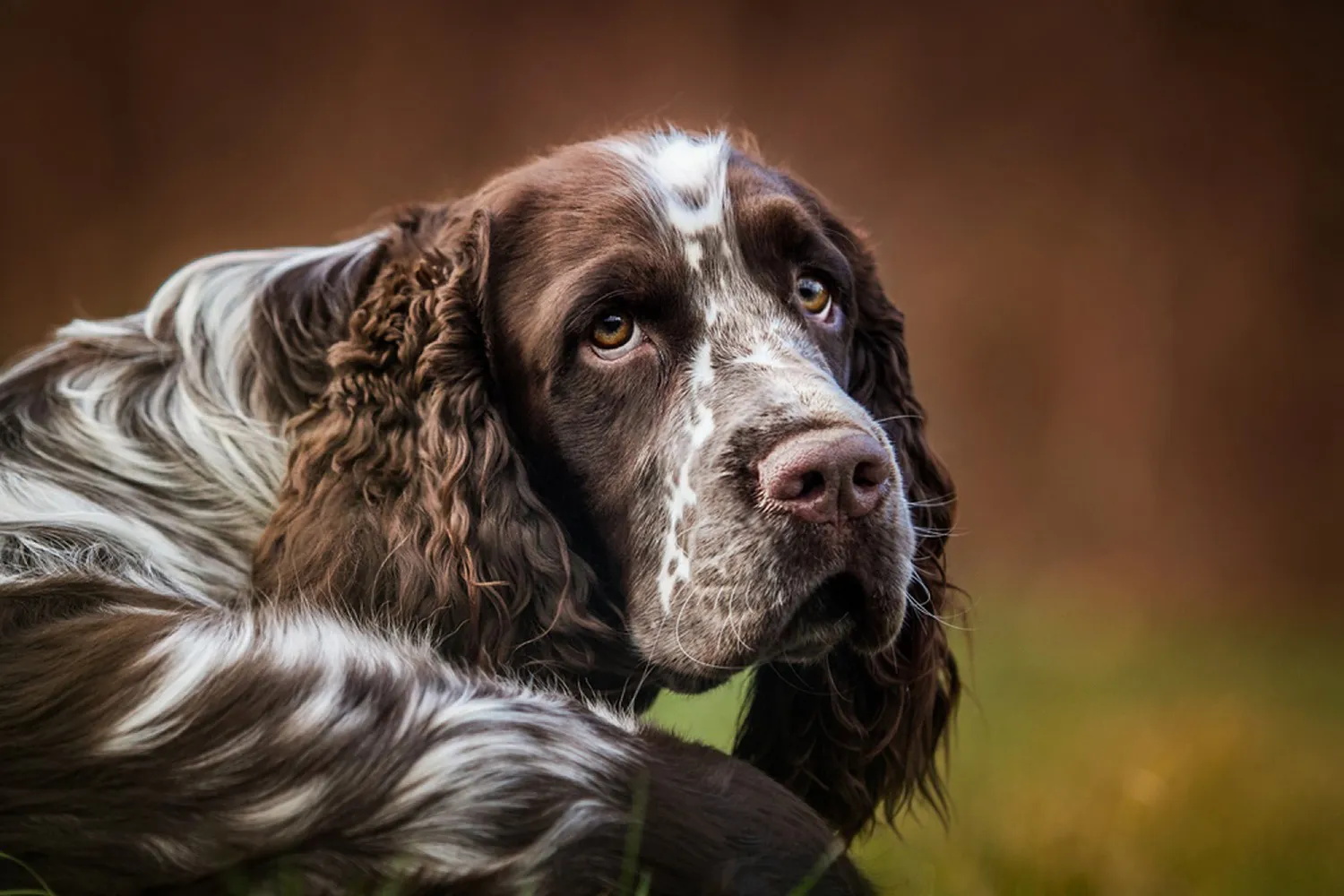
What is the lifespan of an English Springer Spaniel?
These merry, medium sized companions typically stick by your side for 12 to 14 years, which is a lot of muddy paw prints, couch cuddles, and goofy grins. My old Springer made it to 13, and even in his senior years he never lost that trademark zest he just traded marathon fetch sessions for shorter games and longer naps at my feet.
If you want to help your Springer thrive through all those years, keep them lean, active, and engaged. Daily walks and a bit of brain work sniffing games, puzzle toys, a refresher on favorite tricks do wonders. Regular vet checkups, good dental care, and an eye on those floppy ears can prevent little issues from becoming big ones. As they get older, think joint friendly exercise, cushy beds, and a pace that matches their energy that day. And yes, some Springers do tip past 14-my neighbor’s girl celebrated a sprightly 15 with a blueberry “pupcake” but consider that a lovely bonus rather than the norm.
How Much Should You Feed an English Springer Spaniel?
Plan on feeding your English Springer Spaniel twice a day, using measured portions. Most Springers do well on a total of about 2 to 3 cups of high-quality dog food per day, split into morning and evening meals. The sweet spot depends on age, size, and how active your dog is. My old hiking buddy, Tess, needed close to 3 cups when we were logging miles on the trails every weekend, but she drops to about 2 cups during lazy, rainy weeks. Your dog’s needs will shift too, so think of 2 to 3 cups as a starting range, not a rule.
Puppies usually eat smaller, more frequent meals (often 3 to 4 times a day) until they’re old enough to move to two servings. Seniors may need fewer calories, but still benefit from that steady twice a day rhythm. I like using a measuring cup or even a small kitchen scale, because different foods vary in density and it’s easy to overdo it with a scoop. If you’re doing lots of training, count those treats as part of the daily ration on heavy training days, I simply take a little out of each meal to balance things out.
Let your dog’s body be your guide. You should be able to feel the ribs without digging and see a slight waist from above. If your Springer hoovers dinner like there’s a prize at the bottom of the bowl, a slow feeder or puzzle toy can slow things down and make mealtime more fun. And don’t forget fresh water these energetic dogs drink more after a good zoom session.
Skip fatty leftovers and bones. Springers are prone to heart disease, and rich table scraps can pile on unhealthy weight, not to mention cause tummy upset. Cooked bones are a no go, too. They’ll absolutely adore a treat like any dog, but keep the stash sealed and out of reach I learned the hard way when Tess figured out how to nose open a pantry door and helped herself to half a bag. As a rule of thumb, keep treats to about 10% of daily calories, and if you’re unsure, your vet can help fine tune portions for your dog’s lifestyle.
English Springer Spaniel FAQs
Are English Springer Spaniels smelly dogs?
They can be if you let them, mostly because Springers have longer coats and absolutely adore rolling in anything interesting outside. Mine once launched herself into a muddy pond five minutes into our walk and came out smelling like a swamp candle. The trick is routine care. A quick brush a few times a week keeps their coat from trapping dirt, and a rinse after a muddy adventure works wonders. Bathe as needed (not every week unless they’re pros at finding puddles), and always dry them thoroughly especially after swimming to avoid that lingering “wet dog” aroma. Don’t forget ear care, since floppy ears can trap moisture and cause odors; a gentle weekly ear check is part of our Sunday routine. If your Springer still seems stinky despite grooming, have a vet peek at their skin or ears, just to be safe.
Do English Springer Spaniels like to cuddle?
Absolutely when it’s their idea. Springers are famously people oriented and love being near you, but they don’t want cuddles forced on them every minute. After a busy day, mine will curl up like a warm loaf on my lap and sigh herself to sleep. A little advice: meet their exercise needs first and teach a “settle” cue. When they’ve burned off energy, they become the sweetest snuggle buddies. And if your dog wiggles away mid hug, don’t take it personally; give them space and they’ll usually boomerang back for bedtime cuddles.
How do I keep my English Springer Spaniel entertained?
Think variety and challenge. Springers are energetic problem solvers, so mix physical play with brain games. Fetch and tug are great, but add scent work hide treats around the house, use a snuffle mat, or play “find it” with a favorite toy. Short training bursts (five minutes here and there) can be as tiring as a long walk, and they love learning tricks like spin, weave, or a tidy heel. On rainy days, I set up a living room obstacle course with cushions and chairs; my Springer treats it like a mini agility run. Puzzle feeders at mealtimes buy you a peaceful cup of tea. Daily walks are still a must aim for enough movement that your dog is content and drowsy by evening. For puppies, keep exercise age appropriate, and for adults, a good rhythm might be a brisk morning walk, a midday training game, and an evening sniffy stroll with a round of fetch.
Is an English Springer Spaniel ideal for a first time dog owner?
It depends on your lifestyle. If you enjoy being active and are excited about training, a Springer can be a joyful first dog. They thrive with structure, consistency, and daily exercise walks plus play, and many do brilliantly with dog sports like agility, rally, or nose work. If you’re not sure you can commit to that level of activity most days, a calmer breed (or an older, already chilled out Springer) might be a better fit. When I got my first Springer, puppy classes saved my sanity and gave us a strong start. Plan on regular grooming, ear care, and at least an hour of combined physical and mental work on typical days. If that sounds fun rather than daunting, you’ll likely love life with a Springer. If not, no judgment choosing a breed that suits your pace is the kindest decision for both of you.
Disclaimer:
This article is for informational purposes only and doesn’t replace professional veterinary or training advice. Always consult a certified vet or dog trainer for guidance specific to your pup.


